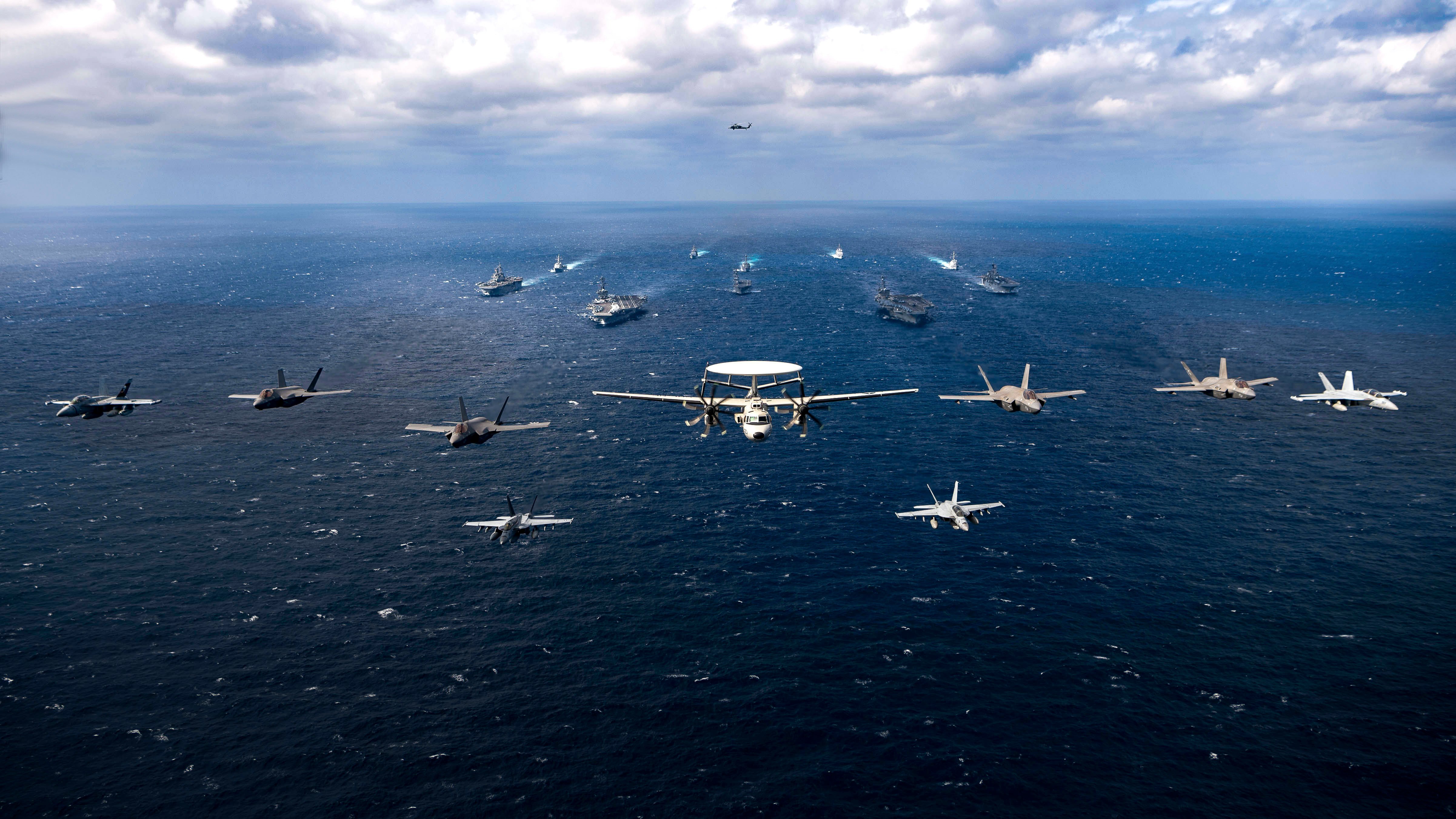

This included substantial changes to British carrier and Fleet Air Arm doctrine, as the air operations in the restricted waters of the European theatre were replaced by large numbers of aircraft operating with a single purpose from several carriers simultaneously, as well as the introduction of superior American aircraft. The BPF remained in the Indian Ocean conducting operational training and re-equipping its units. As the island hopping Pacific war moved through the Philippines inexorably toward Japan, the British fleet was to operate from a main base to be established in Sydney, with an intermediate base at Manus in the Admiralty Islands. Subsequently the British Pacific Fleet (BPF) was formed on 22 November 1944 under Admiral Sir Bruce Fraser. At the second Quebec conference in September 1944, the United States President Franklin D Roosevelt accepted Churchill's suggestion that a British fleet be used in the main theatre of operations against Japan. The successful landings at Normandy and the advance on Germany convinced the British Prime Minister Winston Churchill that the time was right for a return of the White Ensign to Far Eastern waters.

The British subsequently gave priority to the war in Europe, and the United States Navy (USN) took the lead against the IJN in the Pacific. After the fall of Singapore and the subsequent raids on Ceylon in early 1942, the Imperial Japanese Navy (IJN) had expelled the Royal Navy (RN) from the Pacific and effectively restricted British naval operations to the fringes of the Indian Ocean.


 0 kommentar(er)
0 kommentar(er)
